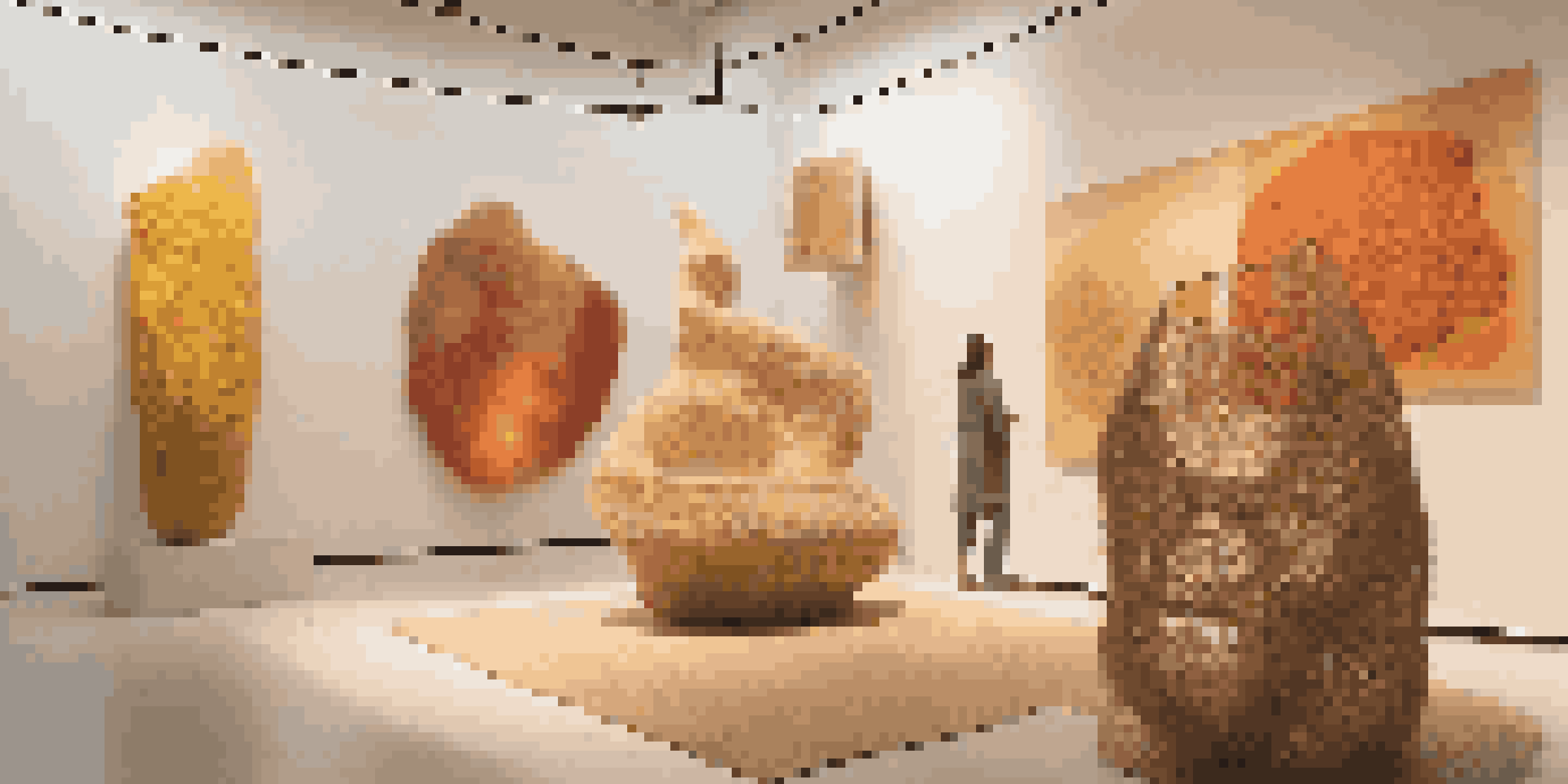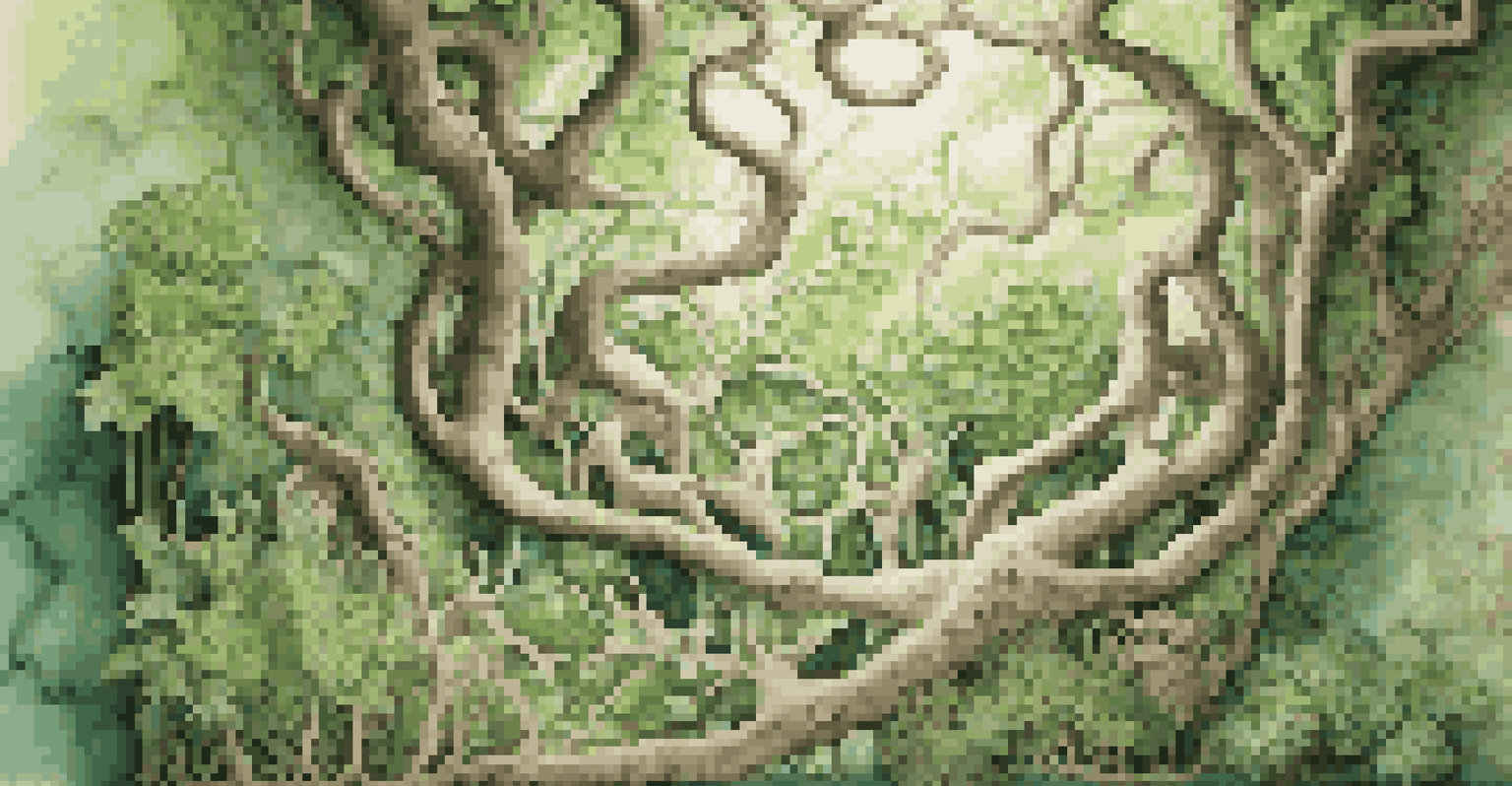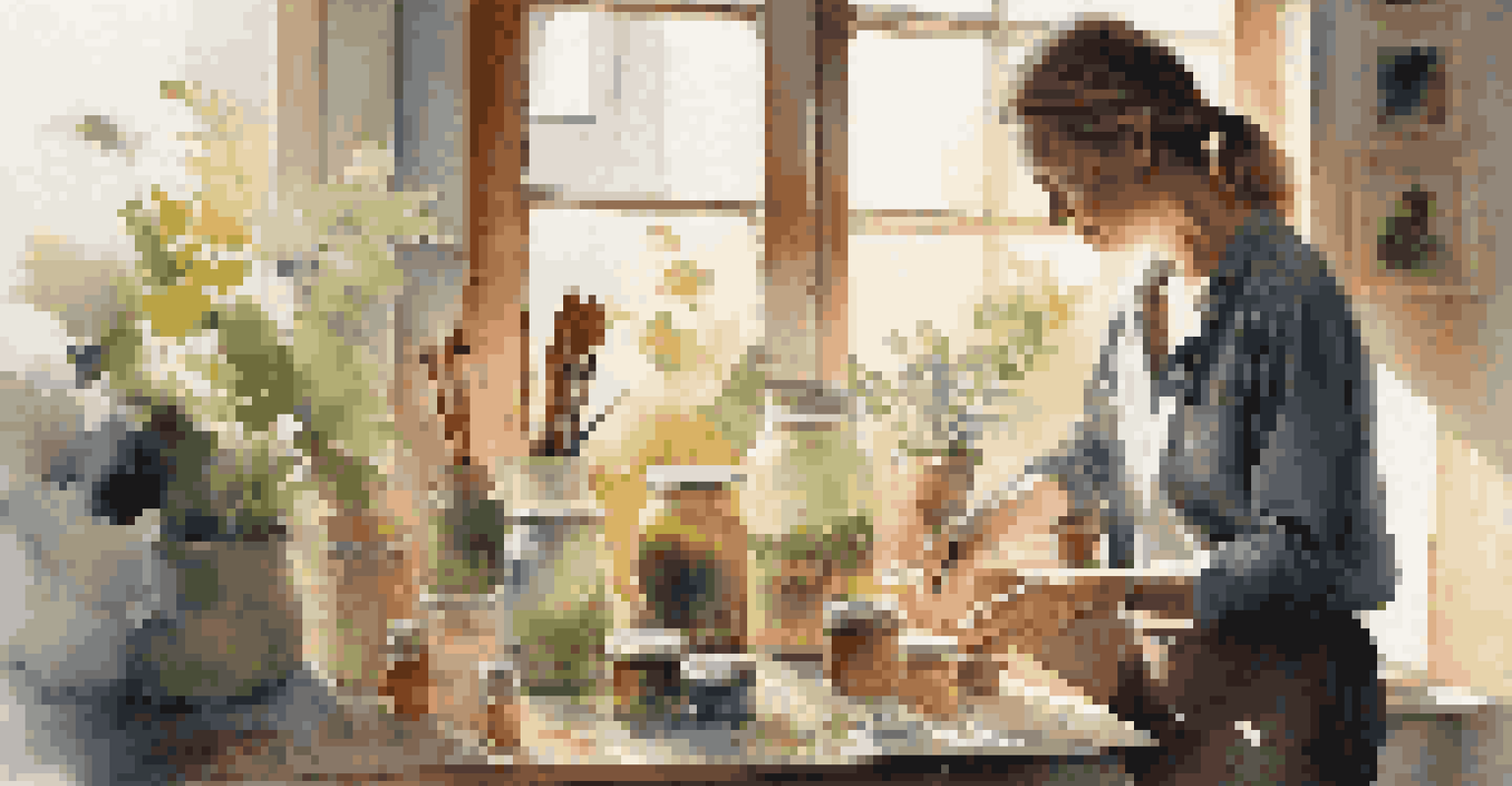Exploring the Use of Biodegradable Materials in Art

Understanding Biodegradable Materials in Art
Biodegradable materials are substances that can break down naturally through the action of living organisms. In the art world, this often includes materials like plant fibers, natural dyes, and even food waste. These materials not only serve as mediums for artistic expression but also embody a commitment to sustainability.
Art is not a thing; it is a way.
Artists are increasingly drawn to biodegradable options as they realize their potential to reduce environmental impact. For instance, using materials like paper made from recycled products or clay that can decompose adds a layer of meaning to their work. This shift is not just an aesthetic choice; it's a philosophical one that speaks to the values of our time.
Moreover, biodegradable materials challenge traditional notions of permanence in art. While many artworks are created to last for generations, using materials that will eventually decay invites viewers to consider the transient nature of beauty and existence. This perspective encourages a deeper connection between the audience and the artwork.
The Benefits of Using Biodegradable Materials
One of the primary benefits of biodegradable materials is their minimal environmental footprint. Unlike synthetic materials that can take hundreds of years to decompose, biodegradable options break down naturally, returning nutrients to the earth. This not only helps reduce waste but also contributes positively to the ecosystem.

Additionally, using these materials can foster creativity among artists. With constraints often comes innovation, and artists are finding unique ways to work with what nature provides. For example, some are creating sculptures from mushroom mycelium, which grows into a sturdy form and eventually decomposes, leaving no trace behind.
Biodegradable Art Reduces Waste
Using biodegradable materials in art minimizes environmental footprints and promotes sustainability.
Moreover, embracing biodegradable materials can enhance an artist's connection with their community. Local sourcing of materials often leads to collaborations and support from local businesses. This approach not only builds community ties but also promotes a shared commitment to sustainability.
Challenges Artists Face with Biodegradable Materials
While the benefits are significant, artists do face challenges when working with biodegradable materials. One major hurdle is the unpredictability of these materials, which can behave differently than traditional art supplies. For instance, natural dyes can vary in intensity based on the source, making consistency a challenge for artists striving for uniformity.
Sustainability is about ecology, economy, and equity.
Additionally, the durability of biodegradable materials can be a concern. Many artists want their works to last, and some biodegradable options may not hold up as well over time. This raises questions about the longevity of art and the importance of ephemeral pieces versus those meant to endure.
Lastly, the availability of high-quality biodegradable materials can be limited. Artists may struggle to find the right supplies that meet their creative vision and sustainability goals. This scarcity can lead to frustration and may deter some from exploring this innovative path.
Case Studies of Artists Using Biodegradable Materials
Numerous artists around the world are pioneering the use of biodegradable materials in their work. Take, for instance, the renowned artist Chris Jordan, who creates large-scale installations from everyday waste, including biodegradable elements. His work not only highlights the issue of consumption but also showcases how art can drive conversations about sustainability.
Another inspiring example is the use of natural pigments by artist Mary O'Rourke. By sourcing colors directly from plants, she creates stunning pieces that echo the very materials they are derived from. This practice not only honors nature but also educates viewers about the potential of natural resources in art.
Challenges in Biodegradable Art
Artists face unpredictability and durability issues when working with biodegradable materials.
These artists demonstrate how biodegradable materials can lead to innovative art forms while simultaneously addressing environmental concerns. Their works often serve as a reminder that art can be both beautiful and responsible, encouraging others to follow suit.
The Role of Education in Promoting Biodegradable Art
Education plays a pivotal role in fostering awareness about biodegradable materials in art. Many art institutions are now incorporating sustainability into their curricula, teaching students about the ecological impact of their choices. This knowledge empowers the next generation of artists to make informed decisions about the materials they use.
Workshops and community programs also provide hands-on experience with biodegradable materials. These initiatives allow artists and hobbyists alike to experiment and discover the beauty of using sustainable supplies. By demystifying these materials, educators can inspire more people to embrace eco-friendly practices in their creative processes.
Moreover, when artists share their experiences and successes with biodegradable materials, they encourage a ripple effect within the community. As more individuals witness the potential and beauty of sustainable art, the movement towards biodegradable materials continues to grow, fostering a culture of responsibility in the art world.
Future Trends in Biodegradable Art Materials
Looking ahead, the future of biodegradable materials in art is promising. As sustainability becomes a more pressing global issue, artists are likely to explore innovative materials that minimize environmental impact. From bio-plastics derived from algae to natural fibers sourced from crops, the possibilities are expanding.
Technological advances will also play a role in this evolution. For instance, 3D printing with biodegradable filaments is gaining traction, allowing artists to create intricate designs while remaining eco-friendly. This fusion of technology and sustainability could redefine how we think about art and its materials.
Education Boosts Sustainable Practices
Integrating sustainability into art education empowers future artists to make eco-friendly material choices.
Ultimately, the ongoing exploration of biodegradable materials reflects a growing consciousness within the art community. Artists are not just creators; they are also advocates for change, using their platforms to promote a more sustainable future through their work.
Conclusion: The Importance of Sustainability in Art
In conclusion, the integration of biodegradable materials into the art world represents a significant step towards sustainability. As artists continue to innovate and experiment with these materials, they not only create thought-provoking works but also inspire a broader conversation about environmental responsibility. This shift encourages both artists and audiences to reflect on their consumption and the legacy they leave behind.
Moreover, the movement towards biodegradable art underscores the idea that creativity and sustainability can coexist harmoniously. By choosing materials that honor the planet, artists can produce work that resonates with the values of the modern world, appealing to audiences who prioritize eco-consciousness.

Ultimately, exploring biodegradable materials in art is more than just a trend; it’s a necessary evolution. As we look to the future, the hope is that this movement will continue to grow, paving the way for a more sustainable and vibrant art community.